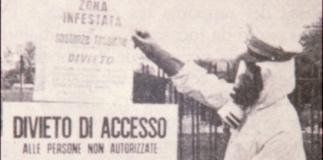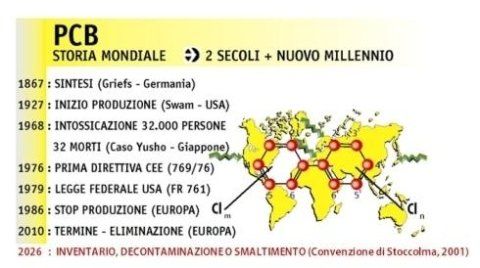Origins of the problem

PCB , a mixture of synthetic substances known in Italy under the trade names of Apirolio or Askarel , has been widely used around the world for about 50 years as insulation in transformers and other electrical equipment (1927, first industrial application by Swan USA).
On its first appearance on the market, it represented a viable alternative to mineral oils, having been defined as a non-flammable substance.
The lack of preliminary and reliable studies allowed its application on a very large scale, until the dramatic events of the 1970s-1980s led to its "ban " (see image below).
Careful studies conducted almost everywhere showed, in fact, that PCB was endowed with an extraordinary bioresistance that could cause dangerous cumulative effects on living organisms and, even worse, that the PCB could lead to dangerous deteriorations ( PCDD-dioxins and PCDF-furans ) when subjected to uncontrolled thermal oxidation (hot spots > 300 °C, explosion and/or fire).
On 10 April 2013, IARC *, the international body for cancer research, a United Nations agency, changed the classification of the PCB agent from Group 2A to Group 1. This means that PCB, which had previously been considered “ probably carcinogenic ”, is now included among the agents that are “ carcinogenic for humans ”.
Causes of PCB contamination

- Manufacture (from origin)
- Topping up
- Oil treatments (cross contamination)
- Maintenance operations (tanks)
- Release of contaminated materials
- Recycling of materials








